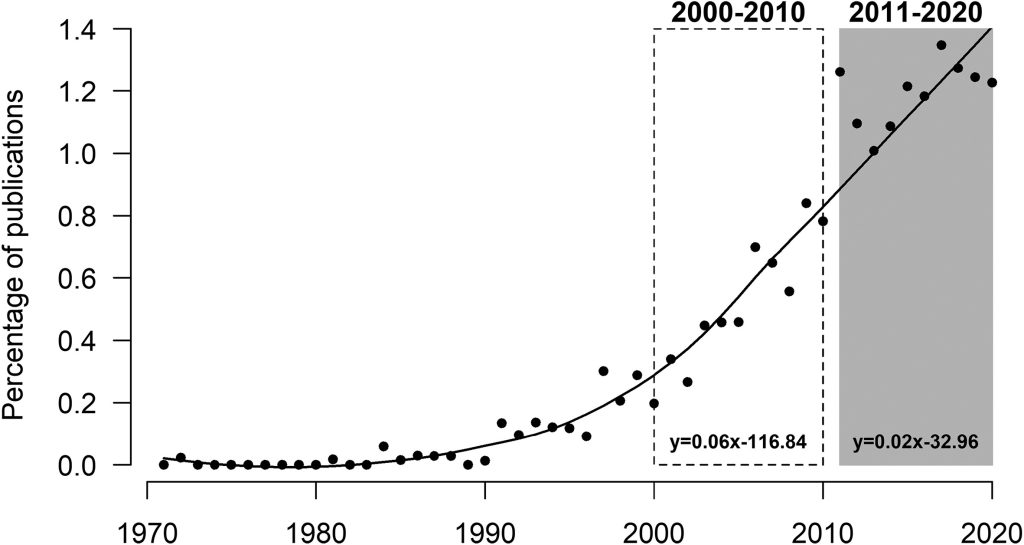In September of 2021, Merri K. Collins, Seth B. Magle, and Travis Gallo conducted a literature review of peer reviewed and scientific primary literature sources that had to do with urban wildlife from 2011-2020. In a previous literature review from 2012, Dr. Magle performed a similar review of primary literature articles from 1971-2010 also looking into urban wildlife. The original Magle paper found an increase in papers from 1971-2010 having to do with conservation, with the new paper finding an even larger increase.
This paper used literature criteria along with key words in order to find the sources. They searched on World of Science in the most high journals, along with the word urban, exurban, and periurban, but limited the search to just primary literature. They then organized their data into categories based of of areas of study, including animal behavior, conservation, ecology, general science, landscape ecology, and wildlife biology. They then broadened their search by using Google Scholar, and including the term wildlife with urban. They ended up adding spatial ecology and social science as two more areas of study in order to acomodate for the increase in articles written in those disciplines.
Once they collected all of the literature sources, they placed them into a table side by side with the table from the Magle paper from 2012. The data was the translated into a graph in order to show the extreme increase in urban wildlife papers since 2010, and can be found below.

This graph shows the uptick in publications from 1971-2020, but specifically from 2011-2020. In the original Magle paper, Magle has hypothesized this increase, and from the new paper, they expect an even greater increase.
The paper found the highest proportion of papers to be in the animal behavior discipline, followed by conservation, and then wildlife management. Mammal studies were the most common found, followed by bird studies. These scientists also made note of the fact that many of these articles came from North America, followed by Europe, with very little coming from Africa, South America, and lastly Asia.
After reading this literature review, I am hopeful that more and more research is being done in the urban wildlife field, especially in conservation. I do believe though that we need more research in areas that are underrepresented, along with more articles that are written in a more interdisciplinary way, as many of these issues can be tackled from different perspectives. I think it is interesting that animal behavior was the most common discipline articles were found in, as I would have originally thought it to be wildlife management.
I think that literature review papers can be very beneficial for public education, as they allow everyone to read, visualize, and understand trends in conservation and urbanization. Considering the majority of the population is projected to live in urban areas by 2050, it is important for people to learn the impact that this has on our natural lands and ecosystems. More wildlife biologists are focusing on urban wildlife research, which can only help us in the long run.
Merri K. Collins a, et al. “Global Trends in Urban Wildlife Ecology and Conservation.” Biological Conservation, Elsevier, 10 July 2021, www.sciencedirect.com/science/article/pii/S0006320721002883?casa_token=wYjg9uqo7sEAAAAA%3AXrA2S7D3aXz-rFSMBOzzI2JZXAsajrJFv8pk2uBBjEw-DX2CFM0gQHoYieIjrKYc_It00-ev-Voh.